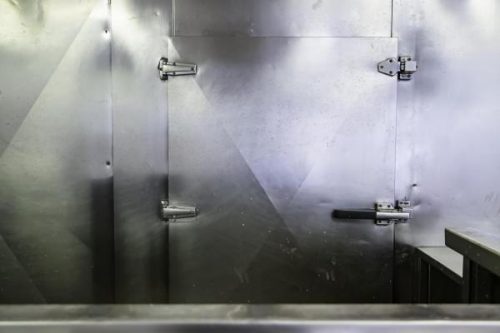Quick-serve restaurants must focus on data-driven preventative maintenance strategies. This critical change in operations keeps a restaurant one step ahead of a breakdown that might get costly.

Paterson, United States - December 20, 2021 /PressCable/ —
During peak hours, the walk-in cooler stops cooling, the fryer fails, or the HVAC gives out. Rather than assisting the line, serving customers, or providing support to employees, a quick solution must be found to avoid losing inventory, unfilled orders, or an even hotter kitchen.
Customers demand a speedy and consistent experience in quick-service restaurants. Safety, quickness, and convenience are more important than ever to keep customers coming back.
Consumer behavior and preferences changed dramatically as a result of COVID-19. Contactless pickup has becoming the norm. The drive-thru continues to reign supreme. Innovation is still fueled by technology.
In today’s competitive landscape, embracing technology to optimize the front-of-house experience is critical to preserving brand loyalty and addressing consumers’ requirements. Back-of-house (particularly, repairs and maintenance) receives far less attention and optimization than front-of-house, despite the fact that customers want a quick, convenient experience. It is, nonetheless, equally important.
Quick-serve restaurants must focus on data-driven preventative maintenance strategies to avoid a nightmare scenario in the middle of peak service. This is a critical, make-or-break change in operations to keep one step ahead of a breakdown that might cost a company a lot of money.
Developing a Preventative Maintenance Strategy
Understanding which areas of the kitchen are most in need of attention or would benefit the most from easy preventative maintenance is the first step toward creating a preventative maintenance (also known as proactive repairs or scheduled maintenance) strategy that actually works.
While preventative maintenance may appear to be time-consuming, the price of emergency repairs outweighs the time invested preparing ahead. Restaurant repairs can cost up to 1.5 percent of sales in 2020, according to the National Restaurant Association, while other estimates suggest it can cost much more, ranging from 2 percent to 6 percent.
Planned maintenance eliminates the need to dispatch a vendor outside of business hours or replace worn-out equipment on the spur of the moment. Most of the time, staff will be able to properly troubleshoot and repair before replacing with well-done preventative maintenance.
It is critical to create and keep to a timetable. Many preventative maintenance tactics can be implemented once or twice a year, or every 30/60/90 days. Think about the restaurant’s specific schedule, as well as seasonal menu changes or significant promotions that boost sales and cause equipment wear and tear.
Quick-service restaurants prioritize their cold side, which also happens to be the source of their most common equipment repairs. According to data from more than 7,000 service incidents collected by 2020, cold side equipment accounted for 35% of all incidents, with walk-in coolers, reach-in refrigerators, and walk-in freezers being the most common. The average cost of these accidents was $668.30.
The average temperature for a walk-in cooler should be between 35 and 40 degrees Fahrenheit, depending on the model. Product is at risk if it exceeds this sweet spot.
Follow these helpful hints to do preventative maintenance on a walk-in cooler:
1. Turn off the breaker for one minute before turning it back on.
2. Examine the evaporator for ice or frost buildup and, if necessary, defrost the device.
3. Compressed air or a wet vacuum can be used to clear the drain pipe.
These will help expose any issues before they become a full-fledged breakdown or necessitate a vendor visit.
Preventative maintenance will save the staff not just time (which is more important than ever), but also inventory and revenue. Equipment repairs are unavoidable, but proactive, data-driven facilities management may help save time, money, and energy by maximizing the time, money, and energy to deal with last-minute errors and get through the day.
Consider accepting solutions that streamline back-of-house procedures as technology evolves and enhances the front-of-house experience. It may seem impossible to improve efficiency in the elusive repair and maintenance process, but with the correct tools, staff can plan, troubleshoot, and strategize to improve the organization.
Above all, smart repair and maintenance allows the team to concentrate on what they do best: feeding hungry clients.
Contact Info:
Name: M. Semmer
Email: Send Email
Organization: Celestial Air HVAC
Address: 296 22nd Avenue, Paterson, New Jersey 07513, United States
Phone: +1-973-627-4899
Website: https://www.celestialairhvacnj.com
Source: PressCable
Release ID: 89057293













